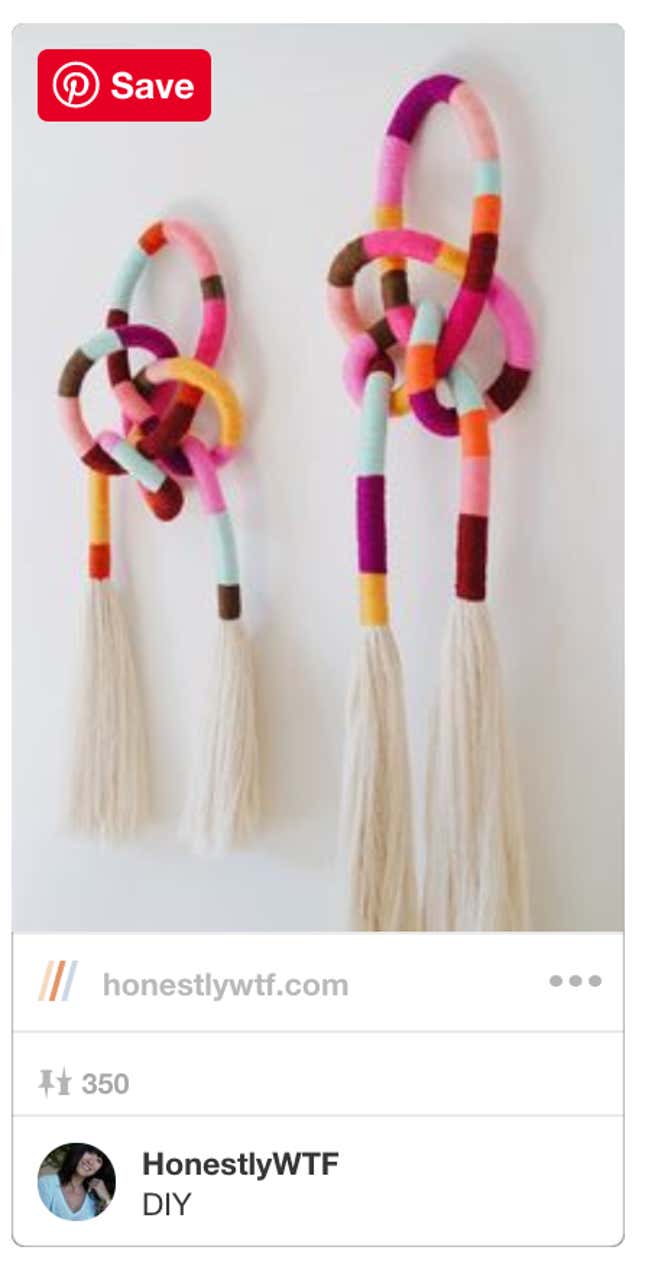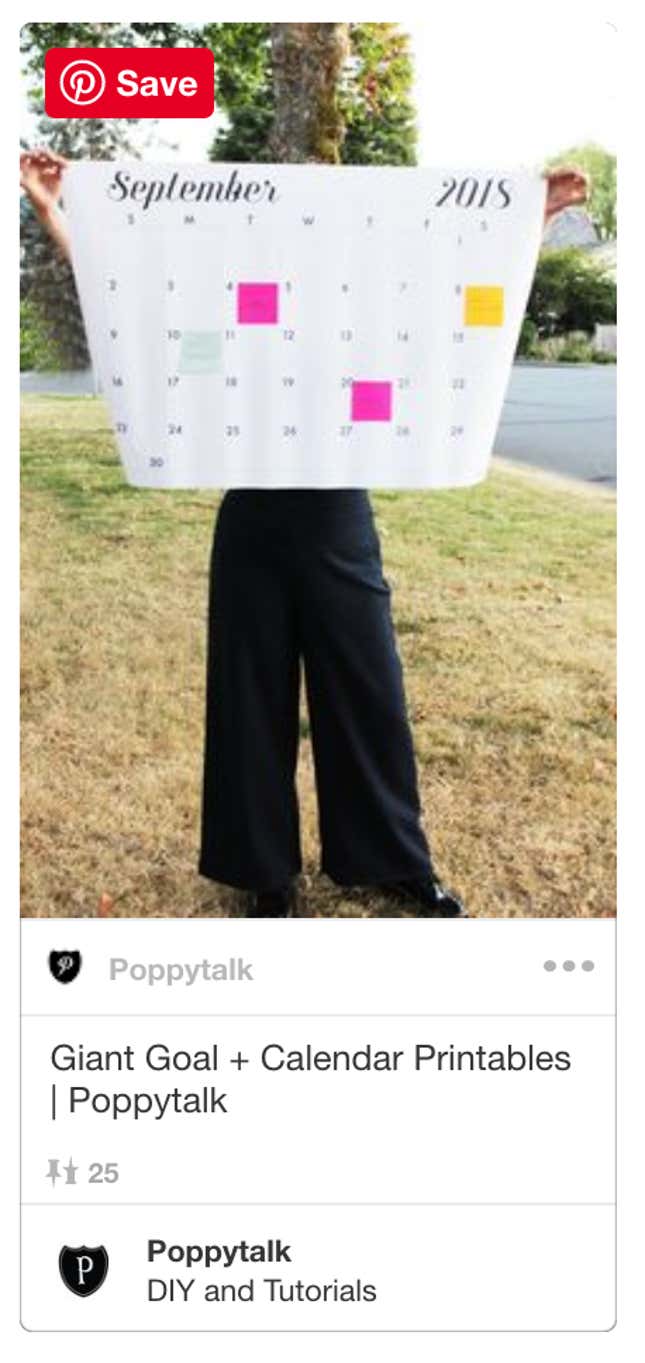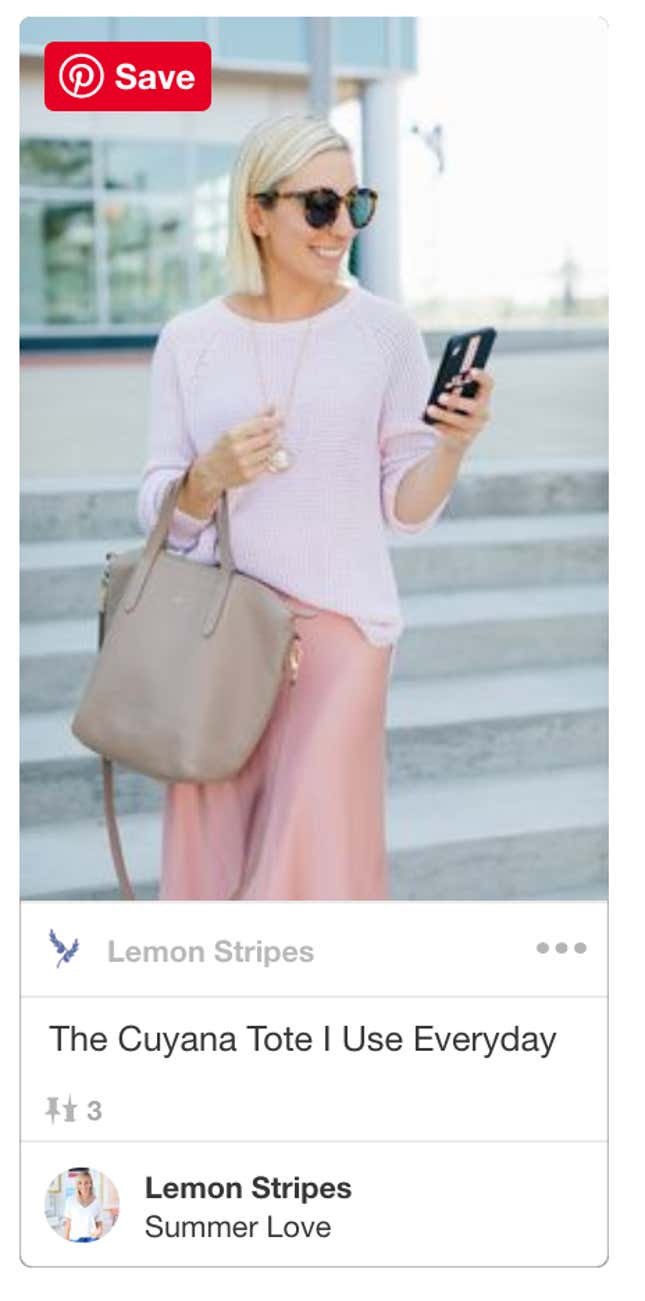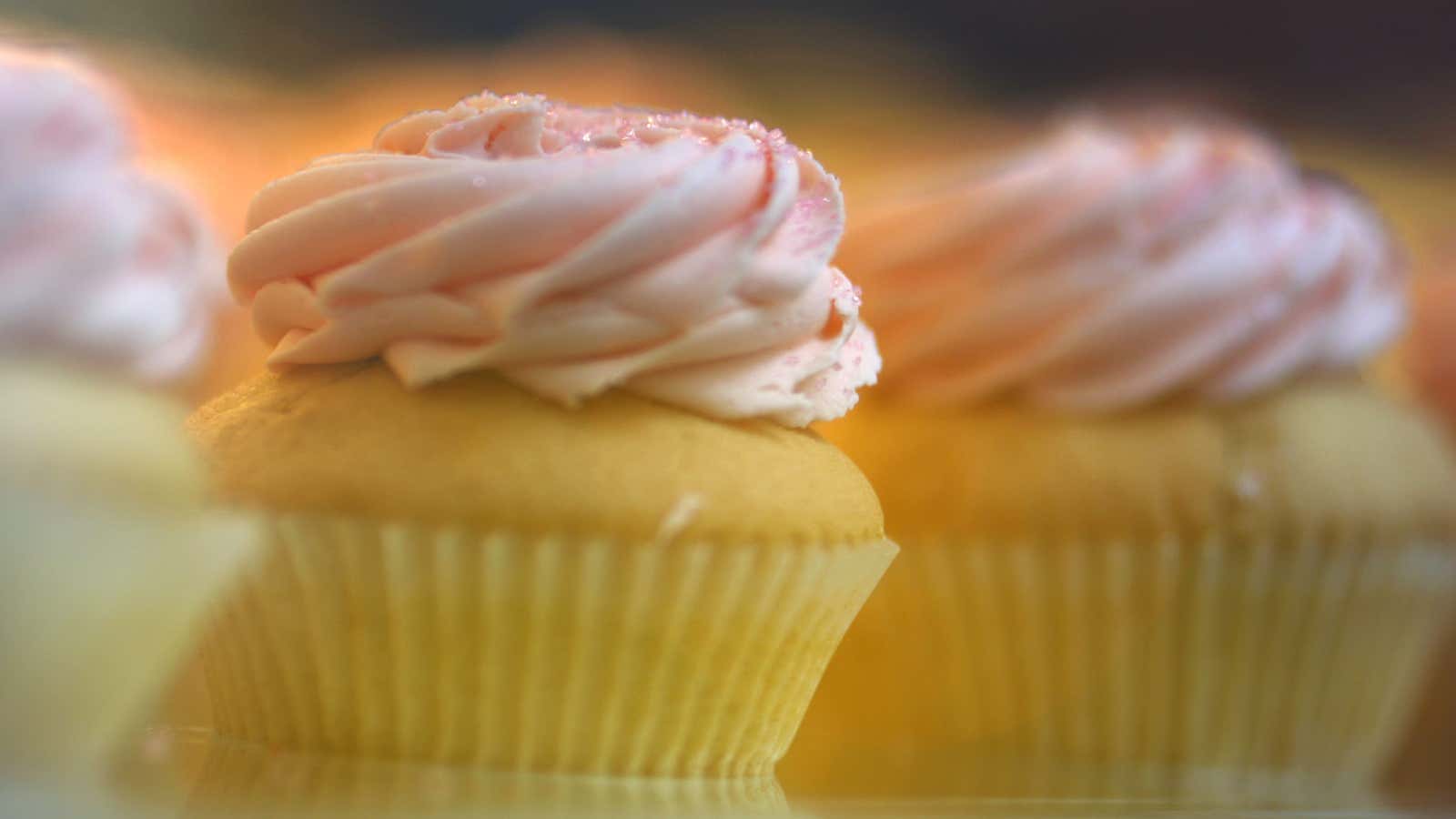Pinterest is a place where people go for hairstyle inspiration, an attractive cookie recipe, or to plan their wedding to a terrifyingly meticulous degree. It’s not really a social network per se—you don’t follow your friends or brands—it’s more of a “discovery engine,” as Pinterest likes to say, or the internet’s scrapbook, like everyone else does. So it’s also not necessarily where you think you’d find influencers, whose entire schtick is personal branding and building a loyal audience.
But there are other reasons Pinterest might be a good space for influencer marketing, say creators, marketers, and Pinterest itself.

Pinterest is first and foremost a massive driver of traffic to influencers’ personal blogs and websites, through “pins” that are links. For DIY blogger Erica Chan Coffman, creator of Honestly WTF, it’s been the top source of views for years, she told Quartz. And yes, even though we might be past the heyday of blogs, for influencers they are still a crucial source of income, since brands value well-produced blog posts featuring their products, that can be later linked to on other platforms. And Coffman isn’t alone: there are countless other influencers, some with millions of followers who’ve turned to Pinterest over the years.
Influencer posts are sprinkled throughout Pinterest, so people can stumble upon them randomly, through an algorithm suggestion, or through search. Enid Hwang, a culture and community manager at Pinterest, told Quartz that 97% searches on the site are “unbranded,” meaning people are not looking for a specific beauty blogger’s makeup tutorial, but a generic term like “how to do a cat eye,” or “travel tips with children.” Julia Dzafic of lifestyle blog Lemon Stripes told Quartz that recipe posts are by far her best performers on Pinterest.
Pinterest also rewards evergreen content, which benefits influencers creating non-timely work like recipes or DIY guides. “Still to this day, I see pins that have been pinned from my site from years ago, 2012 or 2011,” Coffman said.
For advertisers, working with Pinterest influencers makes sense. As Pinterest is mainly a discovery tool, it’s a moment where people are open to new brands, Hwang said. When a user goes on Instagram, their intention usually is not to shop (although Instagram is trying hard to change that), while Pinterest is where they go to find an outfit or living room redesign idea.
Pinterest is built for planning and researching, especially for events like holidays or wedding planning, according to Kamiu Lee, CEO of influencer platform Activate, which has partnered with Pinterest to develop better analytics. “Those are moments in time when a consumer is making big purchases.” It also might be a more natural place to promote a couch than Instagram, for example.

Dzafic said home-decor brands are keen on Pinterest promotion, while Hwang said financial services companies also tend to favor the site, tapping into that planning aspect—like when someone is thinking of a mortgage. Lifestyle bloggers at PoppyTalk have partnered with companies including Tiffany’s and Staples.
Pinterest also isn’t a site where users casually browse for a few minutes, like they might on Facebook or Instagram. “It’s definitely much more immersive,” Lee said. She added that Pinterest is a burgeoning space for influencer content, and expects brands to start tapping into it more and more. And brands love sites with loyal readers: The longer someone spends on a site, the more time they have to be shown ads.
Pinterest is still mainly an afterthought for many marketers, but some brands work with influencers on Pinterest-specific content, like branded Pinterest boards, where the influencer posts the company’s products. Pinterest also created the “Pin Collective,” a select group of creators that it matches up with brands. Coffman of Honestly WTF is one of them.
Old Spice hired Coffman in 2017 for a campaign to target the mothers of teen boys to convince them to buy their products. The campaign was a DIY guide for how to reuse old Old Spice packaging to “poke fun at the ridiculous perfectionism of mom culture on the internet,” Coffman said. It was also specifically a play on the “the aspirational nature of Pinterest.” The series was a hit, Coffman said, and she’d been hired to do more Pinterest-specific campaigns.

While a relative latecomer to the influencer scene, a report from influencer agency Mavrck suggests that it’s because Pinterest was slow to get into advertising in the first place, and it lacked the “scale, return and sophistication” of its competitors. But the platform is growing, with its revenue more than doubling between 2016 and 2018, and losses falling. Research firm eMarketer forecasts that advertising revenue for Pinterest will go from $500 million in 2018 to crossing the $1 billion mark in 2020. Beyond the Pin Collective, it introduced in 2018 new “business profiles” for creators, and later that year, it offered services for influencer-marketing platforms to give them insight into user behavior. In its 2019 IPO filing, the company indicated working with creators as part of its growth strategy.
Pinterest seems to be a natural fit for influencers, who now have to educate brands about its potential, Coffman said. Users meanwhile should be aware that in the Pinterest catalog they are building for themselves, it might be increasingly difficult to know if someone has snuck in to sell them something.
